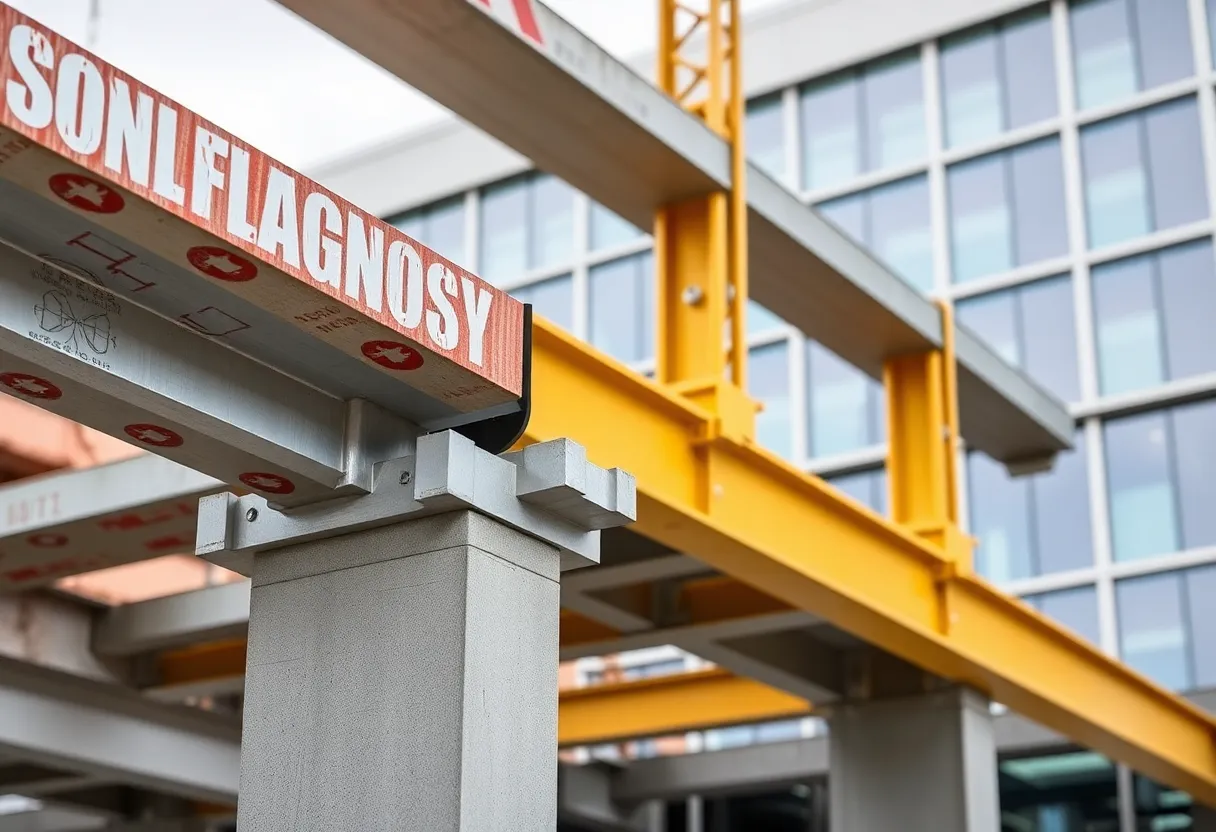Top-Grade Materials for Long-Lasting Structural Connections
In the realm of construction and engineering, the choice of materials for structural connections plays a crucial role in ensuring the longevity and durability of a structure. This article explores top-grade materials that significantly contribute to structural longevity, with a special emphasis on Advanced Composite Materials (ACM) and Directional Friction Connection (DFTC) technology.
Understanding Structural Connections
Structural connections are critical joints that link different elements of a structure. They provide the necessary support for various loads, including tension, compression, and shear. Selecting the right materials for these connections is paramount. The objective is to maximize strength while minimizing the risk of failure over time.
The Importance of Top-Grade Materials
Top-grade materials are distinguished by their superior physical and chemical properties. They resist wear, corrosion, and fatigue, ensuring a longer lifespan for structural connections. Additionally, these materials enhance safety, reduce maintenance costs, and improve the overall performance of the structure.
Key Top-Grade Materials for Structural Connections
The following materials have emerged as preferred choices in modern construction due to their outstanding properties.
High-Strength Steel
High-strength steel has long been a standard choice for structural connections. Its excellent tensile and yield strength make it ideal for use in bridges, buildings, and heavy machinery. Furthermore, its resistance to buckling enhances structural integrity under dynamic loads.
Advantages of High-Strength Steel
- Durability: It withstands harsh environmental conditions.
- Formability: It is easy to fabricate into various shapes and sizes.
- Weldability: High-strength steel can be easily welded, creating strong bonds.
Aluminum Alloys
Aluminum alloys are valued for their lightweight properties combined with significant strength. This material is particularly beneficial in applications where weight reduction is essential, such as in aerospace and transportation sectors.
Benefits of Aluminum Alloys
- Corrosion Resistance: They naturally form a protective oxide layer.
- Recyclability: Aluminum can be recycled without loss of properties.
- Ease of Fabrication: It can be machined, extruded, and welded effectively.
Advanced Composite Materials (ACM)
ACM has gained traction in specialized applications where traditional materials may fall short. Composed of a combination of polymer matrix and reinforcement fibers, these materials exhibit excellent mechanical properties.
Key Characteristics of ACM
- Lightweight: They can provide superior strength-to-weight ratios.
- Resistance to Environmental Factors: ACM withstands moisture, chemicals, and temperature variations.
- Design Flexibility: They can be tailored to specific engineering requirements.
Directional Friction Connection (DFTC) Technology
DFTC technology is a significant advancement in ensuring strong structural connections. This method utilizes friction between surfaces to achieve robust mechanical locking without the need for additional fasteners.
How DFTC Works
The principle involves loading the connected elements in such a way that friction is maximized. When subjected to tensile forces, the frictional grip prevents slippage, thereby increasing both the strength and durability of the connection.
Benefits of DFTC in Structural Applications
- Reduced Material Use: DFTC can eliminate the need for bolts and rivets.
- Enhanced Load Transfer: Efficiently transfers loads between connected elements.
- Lower Maintenance: Reduces the need for frequent inspections and repairs.
Applications of DFTC
DFTC technology is particularly suited for high-stress applications, including:
- Bridges: They can handle dynamic loads from traffic and environmental factors.
- Skyscrapers: Provide exceptional support in seismic-prone areas.
- Offshore Structures: Ideal for withstanding marine conditions.
Evaluating Material Performance
Choosing the right material goes beyond initial costs; it includes assessing long-term performance, maintenance costs, and environmental impact. Factors to consider include:
Tensile Strength
The material’s ability to withstand tension without failure is a primary concern for structural connections. Materials like high-strength steel excel in this area.
Fatigue Resistance
Over time, structural elements are subjected to cyclical loading. The ability of a material to resist fatigue is critical. ACM provides excellent performance under repeated loads.
Corrosion Resistance
For structures exposed to moisture and chemicals, resistance to corrosion is essential. Aluminum and ACMs offer superior protection in these environments.
Future Trends in Structural Materials
As technology and engineering practices evolve, the landscape of materials used in structural connections is also changing. Innovations such as smart materials and bio-inspired designs are becoming more prevalent.
Smart Materials
These materials can respond to environmental changes or loads. Applications include sensors within the structural elements that monitor performance in real-time.
Bio-Inspired Designs
Engineers are looking towards nature for innovative material solutions. For example, mimicking the structure of seashells can lead to stronger, lighter materials.
Conclusion
In summary, the selection of top-grade materials is essential for ensuring structural longevity. Understanding the properties and benefits of high-strength steel, aluminum alloys, advanced composite materials, and innovative technologies like DFTC can significantly enhance the performance of structural connections. Investing in superior materials not only enhances safety and reliability but also minimizes long-term costs and maintenance needs. As engineering progresses, adopting these advanced materials and techniques will play an increasingly vital role in thriving infrastructure.
Author: STAFF HERE OUTER BANKS WRITER
The OBX STAFF WRITER represents the experienced team at HEREOBX.com, your go-to source for actionable local news and information in the Outer Banks, Dare County, and beyond. Specializing in "news you can use," we cover essential topics like product reviews for personal and business needs, local business directories, politics, real estate trends, neighborhood insights, and state news affecting the area—with deep expertise drawn from years of dedicated reporting and strong community input, including local press releases and business updates. We deliver top reporting on high-value events such as the Outer Banks Seafood Festival, NC VIP Fishing Tournament, and NCBBA Red Drum Tournament. Our coverage extends to key organizations like the Outer Banks Chamber of Commerce and Outer Banks Community Foundation, plus leading businesses in tourism, retail, and hospitality that power the local economy such as Kitty Hawk Kites, Outer Banks Mall, and Avon Fishing Pier. As part of the broader HERE network, including HEREAsheville.com, HERECharlotte.com, HEREGreensboro.com, and HERERaleigh.com, we provide comprehensive, credible insights into North Carolina's dynamic landscape.







